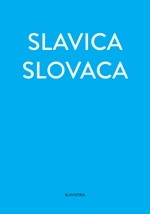Reč slovenskej mládeže žijúcej na Slovensku, v Maďarsku, Chorvátsku a Srbsku v reflexii výskumu
The article presents two internationally orientated scientific projects. The projects, which refer to each other, are focused on language-communication behaviour of Slovak youth in the situational context of the intraethnic use of spoken Slovak in Hungary, Croatia and Serbia. It offers a general as well as a detailed view of the issue of socio-ethnic and linguistic situation of the Slovaks living in Slovakia and abroad. The structure of the contribution consists of: connections between the language, ethnic minorities and overall globalization; protection of the Slovak language used abroad; the language protection legislation; the overall view of the Slovaks representation in the world and the characterization of Slovaks in Serbia and Croatia; a brief characterization of the research projects; the importance of the complex language study.
More...






